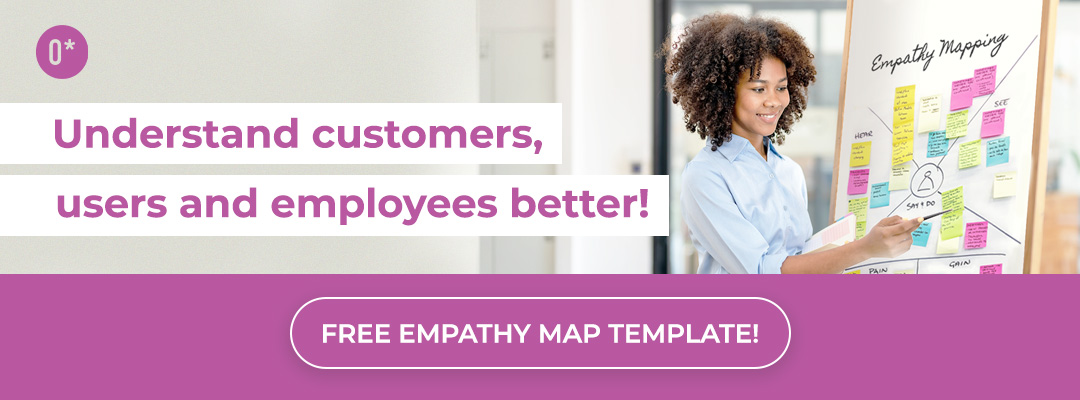Testing your digital product, service, or new feature with real users is a cornerstone of the UX design process! User testing can and should be conducted from the very early stages of the design process all the way through to the live and fully implemented application or website.
The insights uncovered help reduce risk and find pain points before launching a finished product.
As testing experts, we recognize that the plethora of UX testing methods can be overwhelming in the diverse world of user experience design, service design, and design research. There are many different ways to test your design or product, and determining the right approach for your specific use case is crucial for extracting meaningful insights. We’ve crafted a comprehensive guide to six different UX testing methods to help you make your next UX testing sessions as effective as possible. Let’s get started!
P.S. – If you’re diving into the testing process, make sure to check out our 3-part blog series on User Testing! Today’s post is a perfect complement to the topics we’ve already covered:
- Foundations of User Testing and Prototyping
- Usability Testing Tools and Processes
- Top UX Research Tips for Better Usability Test Reports
Remote vs. In-Person Testing, and Moderated vs. Unmoderated Testing
Before you begin testing, a few key aspects of your testing strategy need to be determined.
Remote Vs. In Person: One of the first questions to ask yourself when beginning UX testing is if your study will be remote or in person. Remote testing offers the advantage of reaching a geographically diverse participant pool, enabling you to gather insights from a broader demographic. On the other hand, in-person testing allows for a more intimate and controlled environment, fostering direct interaction and immediate observation.
For some of our favourite remote testing tools, check out our previous blog on Usability Testing Tools & Processes.
Moderated Vs. Unmoderated: Once you’ve decided the location of your testing, whether that be in person or remote, the next decision should be whether your test will be moderated or unmoderated. Will your test be moderated, involving direct interaction with participants, or unmoderated, allowing users to navigate the test independently? Each approach has its own advantages and disadvantages, so pick the one that suits your needs best!
The Three Purposes of UX Testing
UX testing helps us identify user pain points, improve user satisfaction, validate design choices, and so much more. However, before you select which test method is best for you, it’s important to consider the purpose of your testing:
Assessment
Assessment is all about evaluating the current usability and user experience. You should identify specific usability issues and pain points within an existing product or ensure that your product aligns with user needs and expectations.
UX tests focused on assessment involve observing participants as they interact with your product, collecting data on their experiences, and assessing how well the design meets usability standards and user expectations.
Exploration
Exploration involves uncovering new insights, understanding user behaviours, and investigating potential design solutions. Exploration tests are useful during the early stages of design as they gather qualitative data to inform design decisions and generate ideas.
UX tests focused on exploration are typically more open-ended. They aim to discover how users interact with a product in real-world scenarios. In this case, researchers may encourage participants to perform tasks naturally without specific instructions.
Comparison
Comparison involves evaluating multiple designs, features, or iterations to determine which performs better in terms of usability and user satisfaction. Comparison tests help teams make informed choices by highlighting the strengths and weaknesses of each possible design direction, guiding them toward the most effective solution.
These tests typically involve presenting participants with different versions of a product, design, or feature, and collecting data to assess the strengths and weaknesses of each option.
Six Common UX Testing Methods
1. Qualitative Task-Based Usability Testing
Qualitative task-based usability testing is the most common method of UX testing. The core idea is to observe real people trying to accomplish real tasks using your product. This straightforward method will help you understand your users’ experiences, behaviours, emotions and perceptions when interacting with your product.
When should we use this method?
Usability testing is a versatile method that can be used in various situations throughout the design process. It can be used as an assessment, exploration, or comparison tool depending on the tasks given to the participants and the questions you choose to ask.
How does it work?
Key steps involved in conducting usability testing include:
- Creating Scenarios and Tasks: Develop realistic scenarios and tasks that participants will perform during the test. These tasks should align with the objectives and cover key interactions within your product.
- Prepare A Test Protocol: A usability test protocol (script or guide) is a document that outlines the specific tasks you’ll ask participants to accomplish and any questions you want to ask them during the test. Protocols are important because they ensure consistency in your data collection, and they help the facilitator stay focused during the test.
- Thinking Aloud: Encourage participants to think aloud as they navigate through tasks. This verbalization helps you understand their thought process and decision-making.
- Probing Questions: When participants encounter challenges or make unexpected choices, ask open-ended questions to understand their reasoning. Use probing questions to delve deeper into their experiences.
As you conduct the usability test, take notes or record the session. This qualitative data will help you develop a nuanced and in-depth understanding of your participant’s experiences when using your product. For our favourite ways to analyze data from a usability test, check out our blog on Top UX Research Tips for Better Usability Test Reports.
2. Card Sorting
Card sorting is a testing method used to optimize the information architecture and organization of content within a website or application. It involves participants organizing and categorizing information into groups, providing insights into how users mentally structure and perceive information.
When should we use this method?
Card sorting is particularly valuable during the early, exploratory stages of design. Results from card sorting can help determine decisions about menu structures, content hierarchy, and overall navigation.
How does it work?
To prepare for card sorting, facilitators will identify the information or content that needs organization beforehand. Each piece of content or information will then be represented on a physical or virtual card. These cards are then shuffled for the participants, who will organize the cards into categories. There are two ways to facilitate card sorting:
Open card sorting: Participants organize the cards into groups and label these groups themselves based on their understanding of the content.
Closed card sorting: Facilitators provide predefined categories, and participants sort the cards into these predetermined groups.
Once the card sorting has been completed, you can analyze the grouping patterns across participants to identify commonalities and differences. The insights from these patterns can be used to optimize the information architecture within your product!
Photo by UX Indonesia on Unsplash
3. Tree Testing
Tree testing, also known as reverse card sorting, is a method used to evaluate the effectiveness of a website’s information architecture and navigation structure. In tree testing, participants are given a text-based representation of the website’s hierarchy (a tree diagram). They are asked to perform specific tasks by locating and selecting items within the structure.
When should we use this method?
Tree testing focuses specifically on evaluating the effectiveness of your product’s information hierarchy and navigation structure. It can be conducted in the early stages of design, before the visual design elements are implemented, allowing for quick adjustments to be made to the information architecture.
How does it work?
Before you conduct a tree testing session, you should create a tree diagram. A tree diagram represents the information architecture of your website or application. It typically includes categories, subcategories, and items organized in a hierarchical structure, similar to a site map.
During testing, participants are given tasks that require them to find and select specific items within the tree structure. Tasks are designed to simulate real-world scenarios and user goals. Participants will select categories or items they believe match the requirements of each task. The goal is to assess how well users can navigate the information hierarchy to find the desired content.
Data collected can include the success or failure of task completion, the time taken for each task, and any deviations from the expected path. This analysis helps uncover potential issues, such as unclear labelling or misplaced items.
Photo by Qubstudio
4. A/B Testing
A/B testing, also known as split testing, is a testing method used to compare two versions of a webpage, interface, or design element. It’s a quantitative tool for making controlled changes and optimizing current solutions.
When should we use this method?
A/B testing is commonly used during the later stages of the design and development process. It can be used to fine-tune specific design elements and optimize an experience. It is even commonly used post-implementation, with a new design or feature being compared against the existing version.
How does it work?
Before conducting an A/B test, identify a specific aspect of the user experience that you want to test. For example, the size of a call-to-action button, the wording of a headline, or the layout of a form.
Next, create two versions (A and B) of the design element. Ensure that the variations are comparable, and only change the specific element you are testing.
During testing, use a random assignment method to present each version to your users. You can collect several types of quantitative data during testing, such as click-through rates, conversion rates, time spent on the page, or any other relevant metrics.
When testing is over, the results can be used to determine if there are significant differences in user behaviour between the two versions.
A/B testing is a valuable method for continuous improvement and data-driven decision-making.
We also suggest software tools like Hubspot, Outbrain, and Crazy Egg to automate and streamline the process.
5. Heuristic Evaluation
Heuristic evaluation is a method to assess user interfaces and identify potential usability issues. This method involves having a group of evaluators review the interface based on a set of recognized usability principles, known as heuristics. The goal is to uncover problems that may affect the overall user experience.
When should we use this method?
Heuristic evaluation is an especially effective assessment method during the early stages of design. It provides early valuable insights into key areas that require improvement.
How does it work?
Before beginning a heuristic evaluation, you will need to select an appropriate set of heuristics. Heuristics are general principles or guidelines that reflect best practices in UI design. Some of our favourite sets of heuristics include Nielson Norman’s 10 Usability Heuristics for User Interface Design and User Focus’s Web Usability Guidelines.
Typically, a usability expert or group of usability experts conduct the heuristic evaluation. These experts should have a good understanding of usability and accessibility principles. Your interface will then be evaluated against your predefined set of heuristics. The evaluators will identify any violations of the heuristics and areas where the interface may not align with established design principles.
The findings from a heuristic evaluation can be used to refine designs iteratively. It can help prioritize identified issues and create a roadmap to improve the overall usability of the interface.
6. 5-Second Test
The 5-second test is a quick and straightforward UX testing method used to evaluate the effectiveness of a design, particularly its visual and messaging aspects. The test involves showing participants an interface, webpage, or design for a brief duration (typically five seconds) and then asking them questions to assess their immediate understanding.
When should we use this method?
The 5-second test is typically used as an assessment tool during the early stages of design. It can quickly shed light on the clarity and impact of visual design elements, headlines, and key messages. This method is particularly useful for landing pages, homepages, or any design where capturing user attention and communicating essential information quickly is crucial!
How does it work?
To conduct a 5-second test, show your participants your design for exactly five seconds. During this brief exposure, they can take in the visual elements, layout, and any text or messaging that is present.
Then ask your participants questions to gauge their initial impressions and understanding of the design. Common questions include:
- What was the main message or purpose of the page?
- What elements or information stood out the most?
- Can you recall any specific details or features?
Analyze their responses to determine whether or not your design is clearly communicating the key messages and important elements.
In the extensive world of UX testing, understanding the nuances of each method will empower you to make the best decision for your project. By incorporating these diverse approaches into your testing toolkit, you’ll be well-equipped to create products that resonate with your audience. Happy testing!








